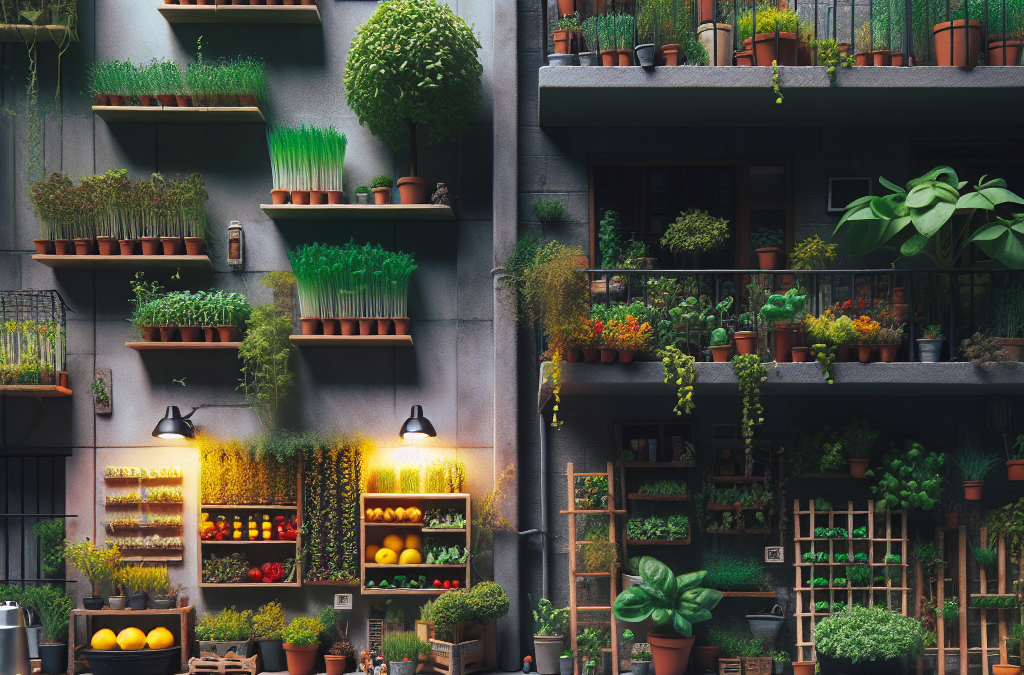Maximizing Your Space
Assessing Your Available Area
When I first started my urban homesteading journey, I had to take a good look at my space. Whether you have a tiny balcony, a small backyard, or just a sunny windowsill, every little bit counts. I found it super helpful to sketch out my area, noting where the sunlight hits, which corners are shady, and how much room I actually have to work with. This kind of assessment is essential for figuring out what you can realistically grow.
Don’t underestimate vertical space! I’ve started using shelves, wall planters, and even hanging pots to utilize every inch of my home. Those vertical gardens are a game changer. What looked like wasted wall space suddenly becomes a lush haven of herbs and flowers. Plus, it adds a beautiful aesthetic to your home.
I also recommend engaging with your community. Speak to your neighbors; you might discover that they have space to share, or you can consider community gardening options. It can really shift your mindset, knowing you’re not alone in this journey!
Choosing the Right Plants
Understanding What Grows Best in Small Spaces
Choosing plants wisely has been one of the biggest lessons for me. Some plants are just better suited for container gardening or compact spaces than others. I started with herbs like basil, cilantro, and mint—they’re low maintenance and pack a flavor punch! If you love cooking, these are perfect companions.
Don’t forget about microgreens! They take up hardly any space and are so easy to grow. Plus, they’re super nutritious. I began sprouting them in small trays and couldn’t believe how quickly I had fresh greens at my fingertips. It’s like magic seeing those little seeds transform into something you can eat!
Lastly, think about the growth habits of plants. Bush varieties of tomatoes or compact peppers can fit nicely in a small area. I’ve had great luck with patio tomatoes, which produce abundantly without taking over my limited space.
Soil and Nutrients
Selecting the Best Soil for Container Gardening
Soil is crucial in urban homesteading, and I learned this the hard way. Not all potting soil is created equal! When I first started, I grabbed the cheapest stuff and my plants just didn’t thrive. Investing in high-quality potting mix with good drainage has made a massive difference. It’s totally worth checking the ingredients!
Furthermore, you can enrich your soil with organic compost. I love making my own compost from kitchen scraps—it’s a fabulous way to reduce waste and boost my soil fertility. Just toss in vegetable peels, coffee grounds, and eggshells, mix it up, and let it work some magic. It’s surprisingly easy!
Don’t forget about fertilizing during the growing season! Liquid fertilizers have worked wonders for me, especially when my plants are flowering and fruiting. You’ll see your garden flourish if you give them the nutrients they need!
Watering Wisely
Establishing a Watering Routine
Watering is one of those things you think you won’t get wrong, but believe me, I’ve had my fair share of overwatering disasters. The first step is understanding your plants’ needs. Some like it wet, and others prefer to dry out between watering. I typically assess the soil by sticking my finger in a couple of inches deep—if it’s dry, it’s time to water!
I also learned about the importance of timing. Watering early in the morning or later in the evening prevents evaporation and helps keep my plants hydrated longer. Plus, it’s a lovely way to start or wind down the day, just me and my plants enjoying that quiet time.
Lastly, I invest in good-quality pots with drainage holes. They help manage excess water and reduce the risk of root rot. It makes all the difference, trust me!
Harvesting and Enjoying Your Bounty
Knowing When to Harvest
The best part of urban homesteading is harvesting what you’ve grown! I’ve learned that timing matters a lot. For instance, some leafy greens can be harvested when they’re just a few inches tall—this encourages further growth and gives you a continuous yield. I love making fresh salads with my own greens!
With fruits and vegetables, it’s essential to recognize the signs of ripeness. Tomatoes should be fully colored and slightly soft, while peppers should have a glossy sheen. I’ve missed the chance on a few overripe fruits, so now I always double-check.
Finally, savor your harvest! Whether it’s a simple meal or sharing with friends, nothing beats enjoying the fruits of your labor. It always brings a sense of satisfaction knowing I grew it myself. Trust me, you’ll be proud of your tiny garden bounty!
FAQ
1. What can I grow in small spaces?
You can grow a variety of plants, including herbs, salad greens, tomatoes, peppers, and even strawberries! Focus on plants that thrive in containers and have compact varieties suitable for limited spaces.
2. How do I know if my plants have enough sunlight?
Most plants need at least 6 hours of direct sunlight a day. Observing your plants throughout the day helps identify sunny spots. If they start leaning toward the light, it’s a sign they need more sun!
3. How often should I water my plants?
Watering depends on the plant type and the weather conditions. A general rule is to check the top inch of soil; if it’s dry, it’s time to water. Aim to establish a consistent routine!
4. Can I use regular garden soil for pots?
It’s better to use potting mix specifically designed for container gardening. Regular garden soil can compact in pots, leading to poor drainage and health issues for your plants.
5. How do I get started with composting?
Start by collecting kitchen scraps like vegetable peels and coffee grounds. Layer them with browns like dry leaves or cardboard in a compost bin or pile. Turn it occasionally, and in a few months, you’ll have nutrient-rich compost for your garden!





